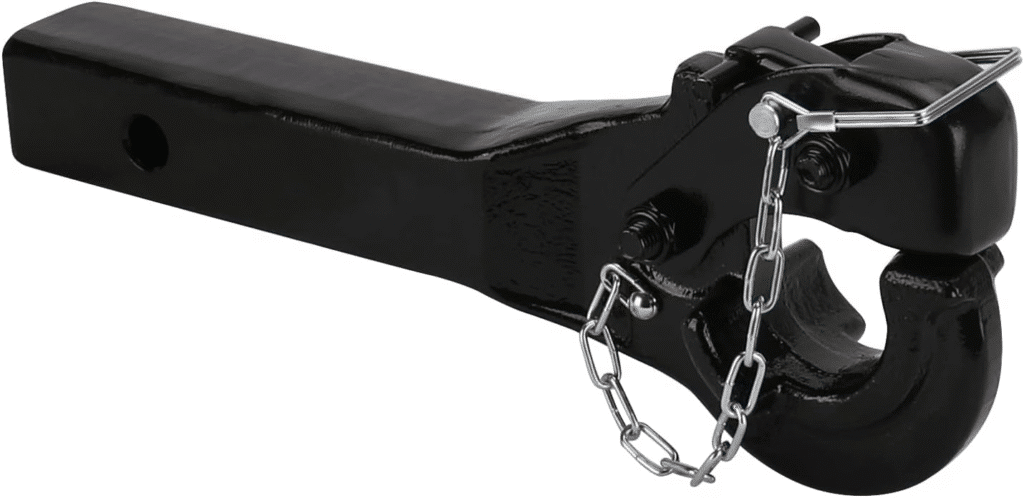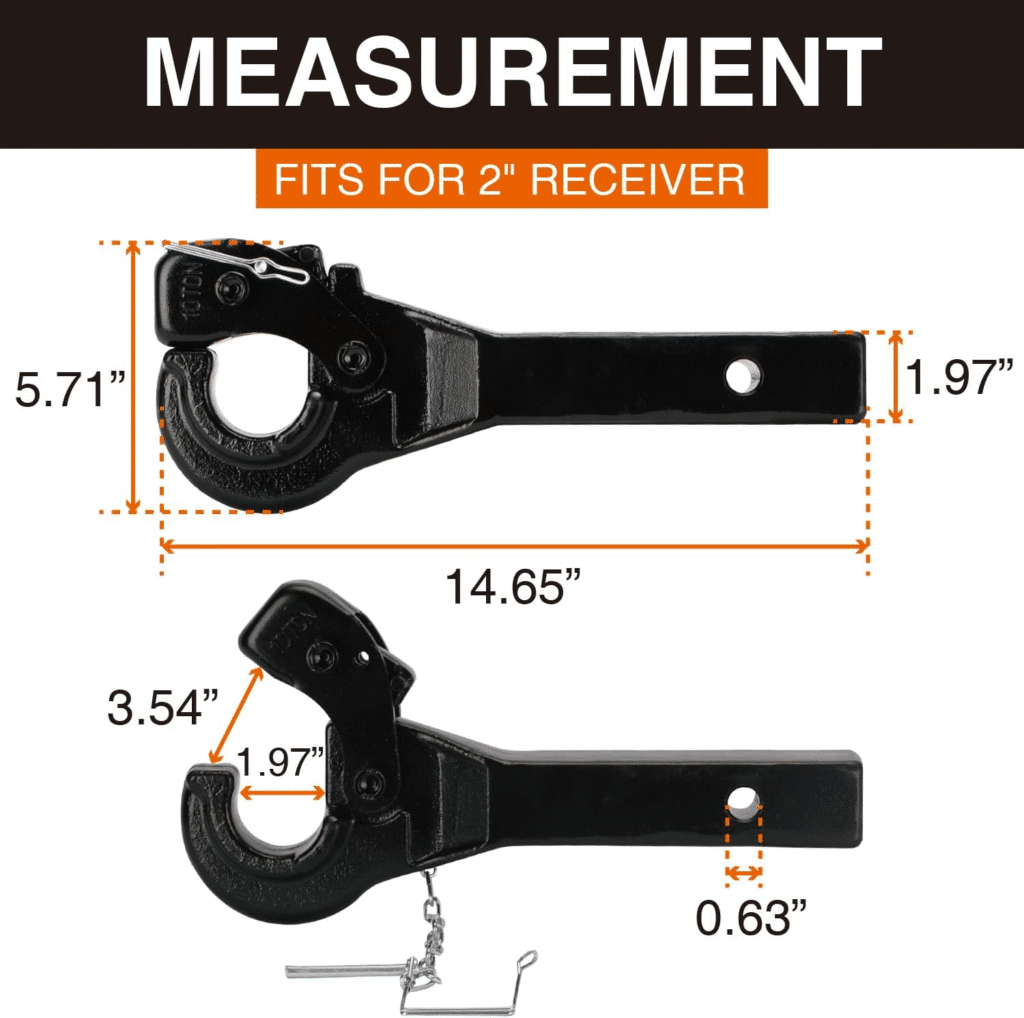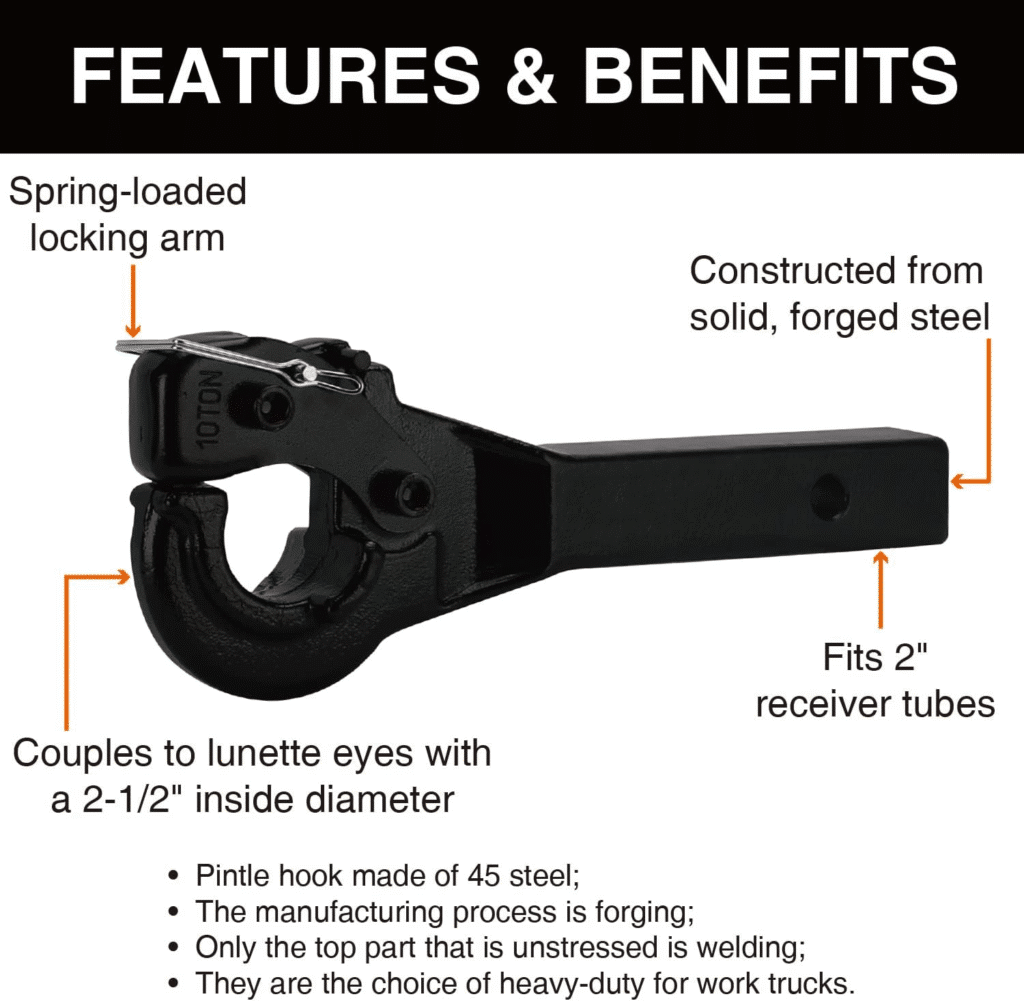Did you know that improperly secured trailer hitches contribute to over 20,000 accidents annually in the United States? That startling statistic underscores why selecting the correct hitch system is not just a matter of convenience; it is a critical safety measure. I have spent years learning the ins and outs of towing, and I can tell you that a dependable hitch system means ensuring safety and preventing expensive damage. I always emphasize picking the right hitch, especially the correct hitch receiver hook, for each specific job. When substantial weight is involved, a 10 ton pintle hitch, engineered for a 2 inch receiver, could be exactly the solution you require.
Understanding Pintle Hitches
Pintle hitches are quite different from ball hitches. Rather than using a ball and socket, pintle hitches employ a lunette ring on the trailer. This ring fits over a hook, which is then secured with a latch. This particular design establishes a more secure connection, especially for off road or heavy duty work where movement and vibration are major concerns. I have found them extremely beneficial in agriculture, construction and military contexts.

The main benefit of a pintle hitch is its ability to manage heavier weight and endure harsher conditions. Unlike ball hitches, which may detach under significant stress, pintle hitches maintain a tighter and more reliable connection. Therefore, they are perfect for moving heavy equipment, trailers equipped with air brakes and other challenging tasks. Once, I used a pintle hitch to relocate a piece of construction machinery across an especially rough construction site. The stability it delivered was amazing. I felt confident navigating difficult terrain without concern that the trailer would come loose.
Essential Features of a 10 Ton Pintle Hitch
Whenever you are selecting a 10 ton pintle hitch for a 2 inch receiver, you must carefully consider several features. I have made a list, based on my own experience:

- Weight Capacity: This is the most important thing. Make sure the hitch can handle the trailer’s maximum weight, along with its load. Going over the weight limit is dangerous and illegal.
- Material and Construction: Seek hitches built from high strength or forged steel. These materials offer excellent durability and resistance to wear. I prefer hitches featuring a strong, one piece build for greater strength.
- Adjustability: Adjustable pintle hitches help you fine tune the hitch height to match the trailer’s lunette ring. This guarantees level towing and reduces stress on the hitch and trailer.
- Latch Mechanism: The latch must be easy to use and secure. Find a latch that features a positive locking mechanism to prevent accidental opening while moving. Some latches also have a safety pin for extra security.
- Corrosion Resistance: Exposure to weather can quickly ruin a hitch. Select a hitch that has a durable finish, like powder coating or galvanization, to protect against rust.
- Certification: Verify that the hitch meets industry standards, such as those from the Society of Automotive Engineers (SAE). Certification assures you that the hitch has undergone testing and satisfies certain performance criteria.
I once used a hitch that lacked proper certification. It failed while carrying a heavy load, which caused serious damage to the trailer. It taught me a valuable lesson about the need to verify certification every time.
Installation and Safety Advice
Correct installation is very important for safe and effective use of a 10 ton pintle hitch. I always suggest having a qualified professional install the hitch, especially if you do not have experience with trailer hitches. However, should you decide to install it yourself, adhere to these guidelines:
- Read the Instructions: Always read and understand the manufacturer’s directions before beginning.
- Use the Right Tools: Use the correct tools, which includes a torque wrench for tightening bolts to the specified torque.
- Inspect the Receiver: Check the receiver on your vehicle for damage. If the receiver is damaged, do not install the hitch.
- Secure the Hitch: Make sure the hitch is securely connected to the receiver using the proper hardware. Use locking pins or bolts to keep the hitch from coming loose.
- Test the Connection: After installation, test the connection by hooking up the trailer and visually inspecting it. Look for movement or instability.
Safety is the most important thing when towing heavy loads. In addition to proper installation, follow these safety suggestions:

- Distribute Weight Evenly: Distribute the load’s weight evenly on the trailer to prevent swaying.
- Check Tire Pressure: Check that the tires on the vehicle and trailer have sufficient pressure.
- Use Safety Chains: Always use safety chains to connect the trailer to the vehicle. Crisscross the chains under the trailer tongue to keep it from dropping if the hitch fails.
- Test the Brakes: Before every trip, test the brakes on the vehicle and trailer.
- Drive Carefully: Drive at a safe speed and avoid quick stops.
Selecting the Proper Hitch Receiver Hook
Selecting the proper hitch receiver hook means thinking about several things, such as the trailer you are towing, the load’s weight and the conditions where you will be working. A 10 ton pintle hitch usually works for heavy duty applications, but it is important to select a hitch specifically designed for your requirements. I have seen many people underestimate matching the hitch to the task, which creates problems.
Matching the Hitch to the Trailer
Trailers need different hitches. For instance, a gooseneck trailer needs a gooseneck hitch, and a fifth wheel trailer needs a fifth wheel hitch. Pintle hitches typically work with trailers that use a lunette ring, like military, agricultural and certain construction trailers. Once, I attempted to adapt a ball hitch to a trailer intended for a pintle hitch. It failed. The connection proved unstable, and the trailer swayed. This clearly showed the need to use the proper hitch for the trailer.
Considering the Load’s Weight
The load’s weight matters a lot when selecting a hitch. Always select a hitch capable of handling the trailer’s maximum weight and its load. Going over the limit could break the hitch, which then creates huge problems. I always prefer to select a hitch that can handle more weight than I plan to carry.
Operating Conditions
The conditions play a part in selecting a hitch. If you will be towing off road, select a hitch made for those conditions. Pintle hitches usually work well for off road use due to their strong build and secure connection. Select a hitch that has a durable finish for protection against corrosion, especially if you will be working in wet areas.
Maintenance
Routine maintenance helps make sure your 10 ton pintle hitch remains safe to use. I suggest doing the following:
- Lubricate the Hitch: Lubricate the hitch’s moving parts on a regular basis to prevent wear. Use a high quality grease designed for trailer hitches.
- Inspect for Damage: Inspect the hitch for damage, like cracks. Replace the hitch if you find any damage.
- Tighten Bolts: Check the bolts that connect the hitch to the receiver. Tighten them to the specified torque.
- Clean the Hitch: Clean the hitch regularly to remove dirt. Use a mild detergent and water.
I once forgot to lubricate my pintle hitch, and it seized, making it hard to connect the trailer. It was easily avoided with regular maintenance.
Pintle Hitch Alternatives
While pintle hitches perform well for heavy duty applications, they might not always be ideal. Here are some alternatives:
- Ball Hitches: Ball hitches represent the most common type of trailer hitch. They work for towing lighter loads, like small utility trailers and boats. They are not for heavy duty work.
- Gooseneck Hitches: Gooseneck hitches are for towing heavy trailers, like horse trailers. They deliver a more stable connection than ball hitches and can handle greater weight.
- Fifth Wheel Hitches: Fifth wheel hitches resemble gooseneck hitches but typically work with larger trailers. They provide good stability and weight capacity.
- Weight Distribution Hitches: Weight distribution hitches distribute the trailer’s weight across the vehicle’s axles. They improve handling, especially when towing heavy loads.
The best option depends on your requirements. I suggest speaking with a trailer hitch expert to find the most appropriate hitch.
Examples
To explain the need to select the proper hitch receiver hook, I want to share some real examples:
Case Study 1: Construction Mishap
A construction company used a small ball hitch to tow a generator to a site. The hitch broke on a hill, causing the generator to roll downhill and damage a building. The company faced repair costs. They could have avoided this by using a pintle hitch.
Case Study 2: Agricultural Equipment
A farmer transported equipment using a 10 ton pintle hitch. The hitch was properly installed, and the farmer followed all safety measures. The equipment was transported safely. This shows the effectiveness of using the proper hitch.
These examples show why you need to select the proper hitch receiver hook and adhere to all safety measures. A properly selected hitch can prevent accidents and make sure heavy loads get transported safely.
Hitch Technology
As technology advances, trailer hitch design will change. Some trends include:
- Smart Hitches: Smart hitches use sensors to monitor towing and provide feedback to the driver. This improves safety.
- Automatic Hitches: Automatic hitches connect the trailer automatically, removing the need for manual labor. This saves time.
- Lightweight Materials: Manufacturers use aluminum to reduce the weight of hitches. This improves fuel economy.
These changes promise to make towing safer. I am excited to see what happens with hitch technology.
Takeaway
Selecting the correct hitch receiver hook, especially when dealing with heavy loads requiring a 10 ton pintle hitch, has a big impact on safety. Think about the trailer type and the load’s weight. I hope this guide has given you the knowledge to make a decision and make sure you tow safely. Remember to focus on safety to maximize the benefits of your hitch system.
